

In this guide, learn all about perpendicular lines and how to identify them!

Author
Katie Wickliff
Published
October 10, 2023


In this guide, learn all about perpendicular lines and how to identify them!

Author
Katie Wickliff
Published
Oct 10, 2023


In this guide, learn all about perpendicular lines and how to identify them!

Author
Katie Wickliff
Published
October 10, 2023


Key takeaways
Table of contents
What do television screens, postcards and football goalposts have in common? They all meet at a specific angle to form perpendicular lines!
So, what does ‘perpendicular’ actually mean? In this article, we’ll answer that question and learn all about perpendicular lines, including how to draw them with different tools. Let’s get started!
Perpendicular lines are two straight lines that meet or intersect at 90°.
This intersection is also called a right angle and is marked by a small square as shown in the figure below:
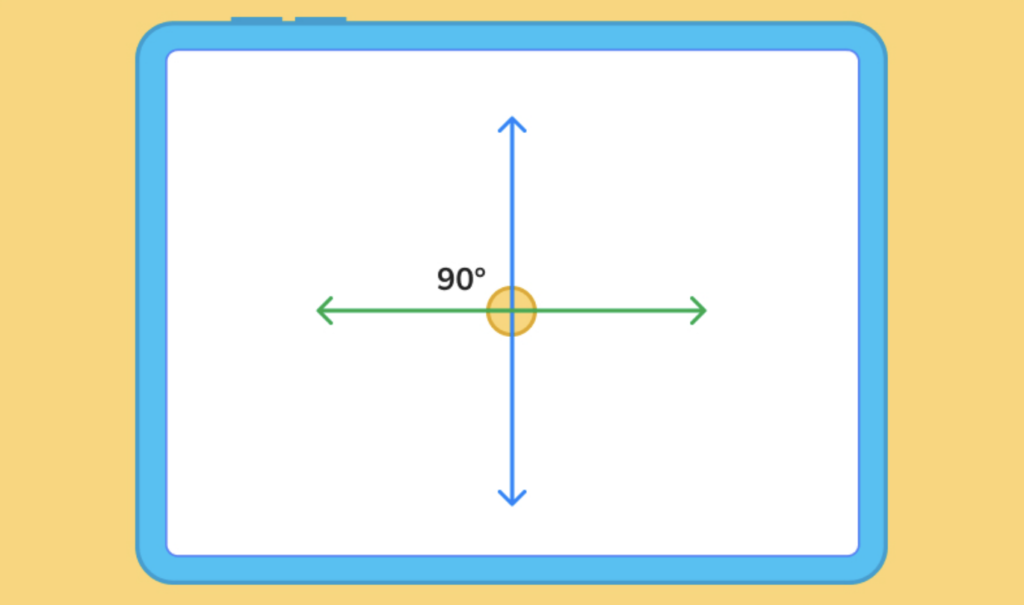
Unlock unlimited maths questions
Put your learning into practice with fun exercises + games that are proven to boost ability!
Get 2 FREE weeks of Doodle this spring!
Use code 2WKS_SPR to enjoy unlimited questions and games
The definition of perpendicular is a straight line at an angle of 90° to a given line, plane or surface. The word ‘perpendicular’ originated from the Latin word ‘perpendicularis’, meaning a plumb line.
Here are several perpendicular line examples:
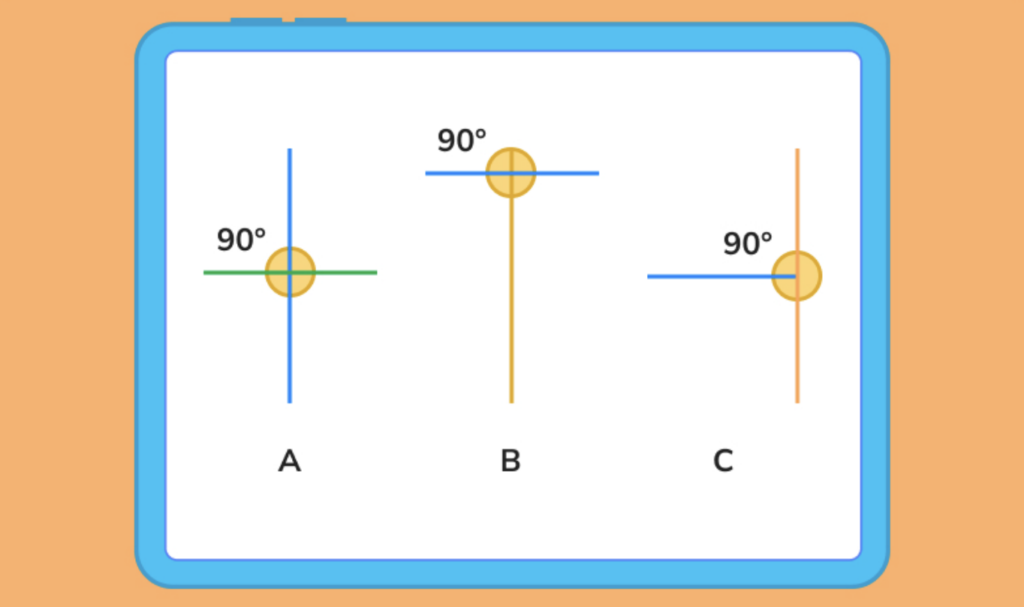
In the graphic above, you’ll notice that the angles meet or intersect at 90°.
All perpendicular lines intersect, but not all intersecting lines are perpendicular. Some lines intersect at different angles.
To deepen your understanding, here are a few examples of lines that aren’t perpendicular:

In this example, the lines form an obtuse angle (greater than 90°).
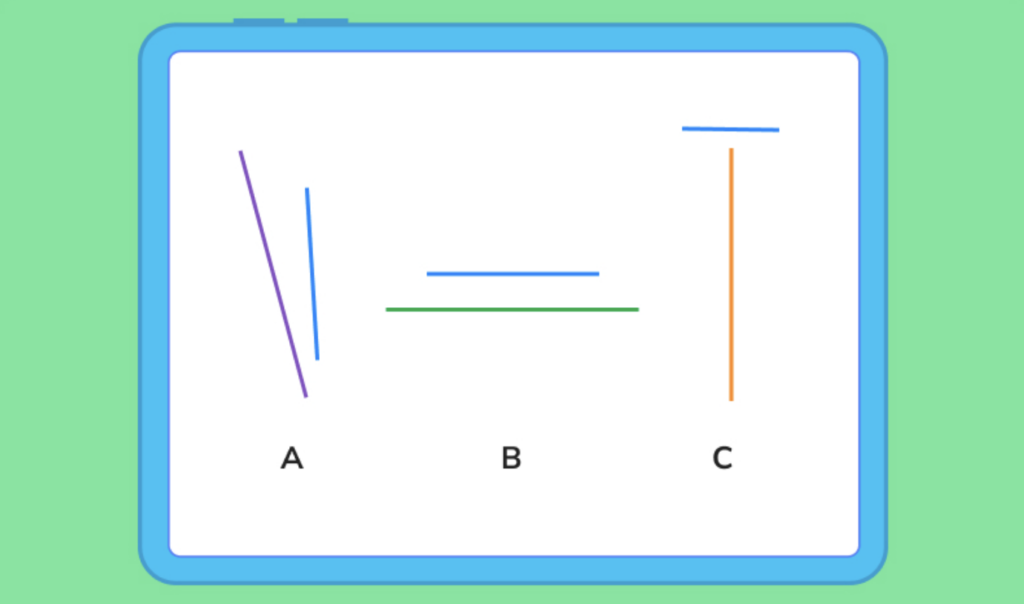
In this example, the lines do not meet or intersect, so they cannot be perpendicular.
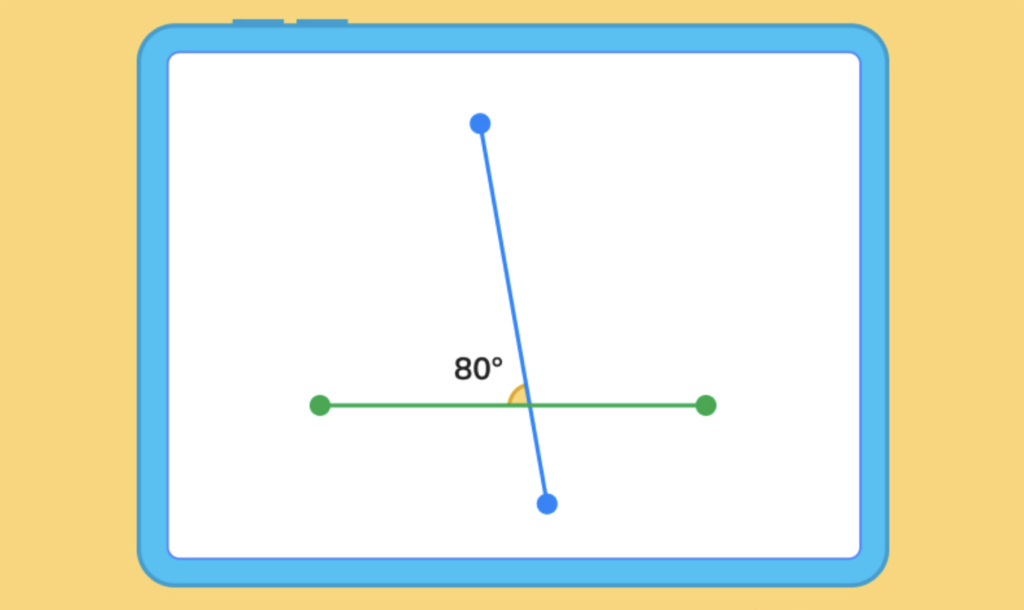
In this example, the lines form an acute angle (less than 90°).
Want to learn more about perpendicular lines? DoodleMaths is an app that’s filled with thousands of interactive questions exploring shape, measurement and more!
Designed to be used ‘little and often’, its powerful algorithm sets work at just the right level for each child, letting them work independently.* Try it for free today!

*Earning 24 stars a day in DoodleMaths is proven to double the rate of progression. Read full study
To create perpendicular lines, the angles must measure exactly 90°. It’s difficult to draw an exact right angle without tools. However, you can easily draw perpendicular line segments with a protractor or a compass!
Step 1: To draw perpendicular lines with a protractor, use a ruler to draw a straight horizontal line.
Step 2: Then, draw a dot somewhere on the horizontal line. For this example, let’s label the dot P.
Step 3: Now, place the baseline of the protractor along the horizontal line with the center at P.
Step 4: Mark a point, C, at the 90 mark of the protractor, like this:
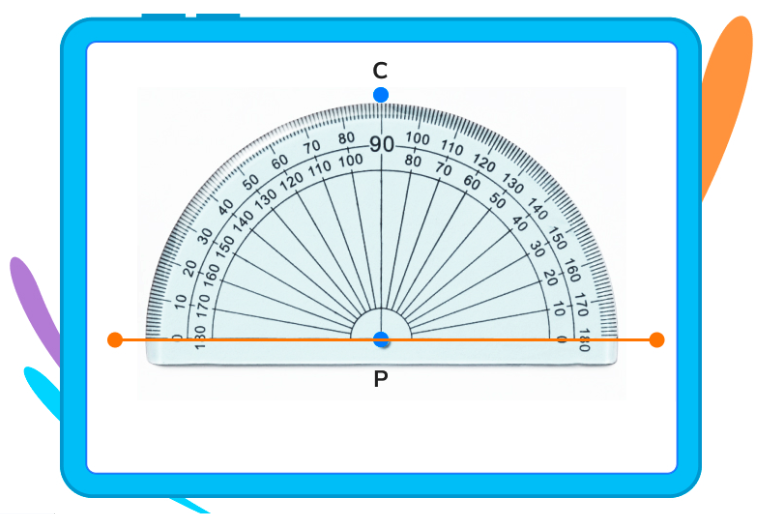
Step 5: Remove the protractor, and using your ruler or straight edge, draw a line that connects the points C and P.
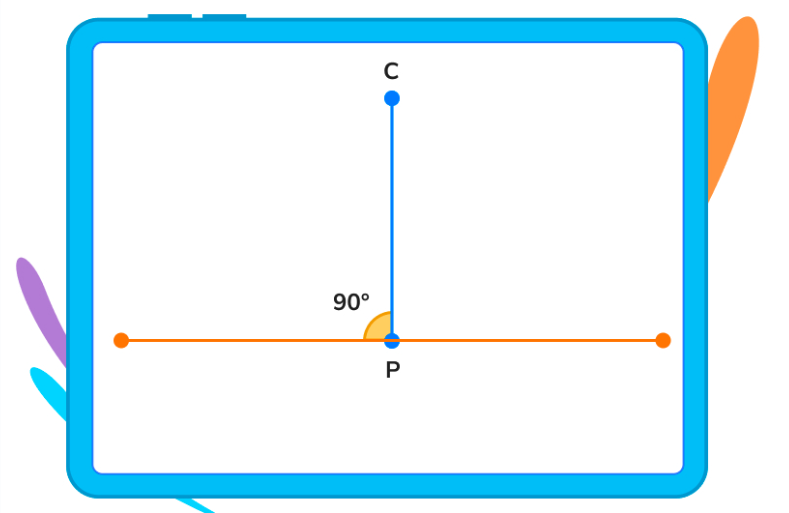
Another way to draw exact perpendicular lines is with a compass. In maths, a compass is a drawing tool that allows you to create precise circles and arcs.
To draw perpendicular lines with a compass:
Step 1: First, use a ruler to draw a straight horizontal line.
Step 2: Then, draw a dot somewhere on the horizontal line.
Step 3: Put your compass point on the dot and draw a small circle around the dot. The size of the circle doesn’t matter, as long as it doesn’t take up more than half the length of your original line.
Step 4: Place your compass point on the part of the circle that touches the line. For this example, we labeled this point A.
Step 5: Open your compass wider and draw an arc above the circle.
Step 6: Place your compass point on the other part of the circle that touches the line. For this example, we labeled the point B.
Step 7: Again, open your compass wider and draw an arc above the circle that intersects with your first arc, like this:
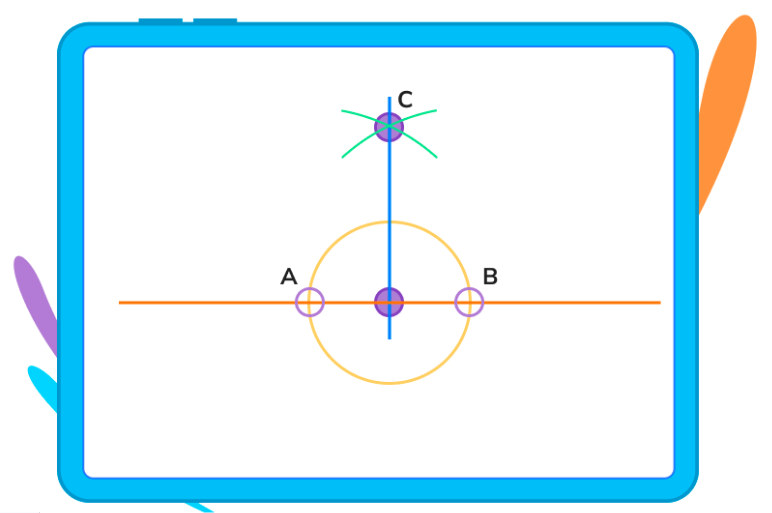
Step 8: Draw a dot where the arcs intersect. For the example above, we labeled the point C.
Step 9: Finally, taking your ruler or straight edge, draw a vertical line from point C down through your first horizontal line!
There are two main properties of perpendicular lines:
Unlike perpendicular lines, parallel lines are two straight lines in the same plane that never meet, no matter how long they stretch. Parallel lines can run vertically or horizontally.
Real-world examples of parallel lines include lines on a sheet of notebook paper, the edges of a ruler and railroad tracks. If you want to find out more, be sure to check out our parallel lines guide!
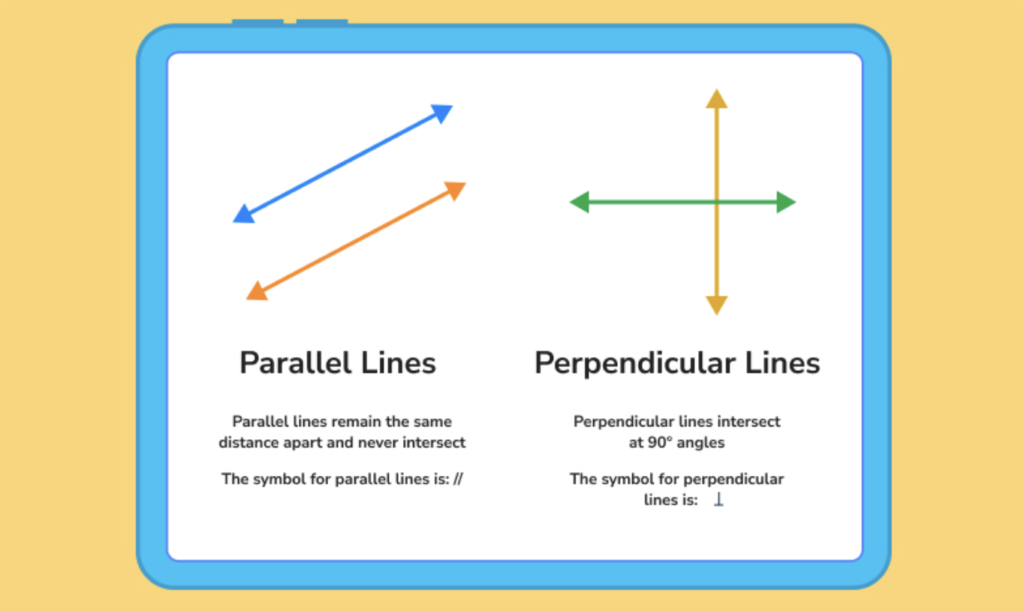
The table above highlights the main differences between perpendicular and parallel lines.
You can prove two lines are perpendicular in several ways. One common method to prove two lines are perpendicular is by using a protractor.
Since you know that two lines are perpendicular if they meet at right angles, use your protractor to measure the angle.
Step 1: First, align the centre marker of your protractor with the point where the two lines intersect, like this:
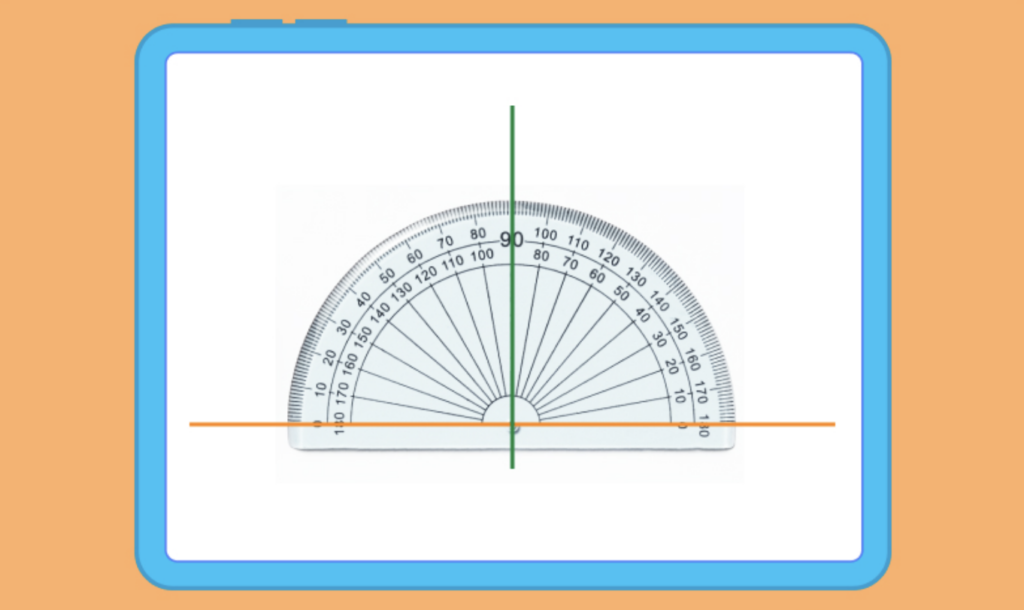
Make sure to have the bottom of your protractor line up with the horizontal line on your paper.
Step 2: Next, look at the vertical line and see what angle your protractor shows. If the protractor shows that the vertical line is at 90°, then your lines are perpendicular.
Our world is full of perpendicular lines. If you look around your home, school or playground, you’ll find several examples of perpendicular lines!
Some of the most common include:

Perpendicular means a line at a right angle to another line or plane.
In geometry, the opposite of perpendicular lines is parallel lines. Unlike perpendicular lines, parallel lines never intersect.
The symbol for perpendicular lines is: ⊥.
The equation of a line that is perpendicular is y = mx + c.
You can use this formula to identify perpendicular lines if you know their coordinates.

Now that you’ve learned all about perpendicular lines, it’s time to put your learning into practice – and this is where DoodleMaths can help.
Create a free account to deepen your knowledge of perpendicular lines through thousands of interactive exercises and games, all designed by teachers!
Lesson credits

Katie Wickliff
Katie holds a master’s degree in Education and a bachelor’s degree in both Journalism and English. She has over 15 years of experience as a teacher and is also a certified tutor. Most importantly, Katie is the mother of an 8 and 11-year-old. She's passionate about education and firmly believes that the right tools and support can help every child reach their full potential.

Katie Wickliff
Katie holds a master’s degree in Education and a bachelor’s degree in both Journalism and English. She has over 15 years of experience as a teacher and is also a certified tutor. Most importantly, Katie is the mother of an 8 and 11-year-old. She's passionate about education and firmly believes that the right tools and support can help every child reach their full potential.
What are parallel lines?
Learn all about parallel lines, including what they look like and their definition
3D shapes: names and properties
From spheres to cubes, we explore everything you need to know
What is a rhombus shape?
In this guide, discover the key properties of this unique four-sided shape!
Book a chat with our team
If you’d like to use Doodle’s browser version, please visit this page on a desktop.
To log in to Doodle on this device, you can do so through our apps. You can find out how to download them here: